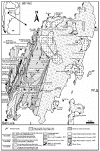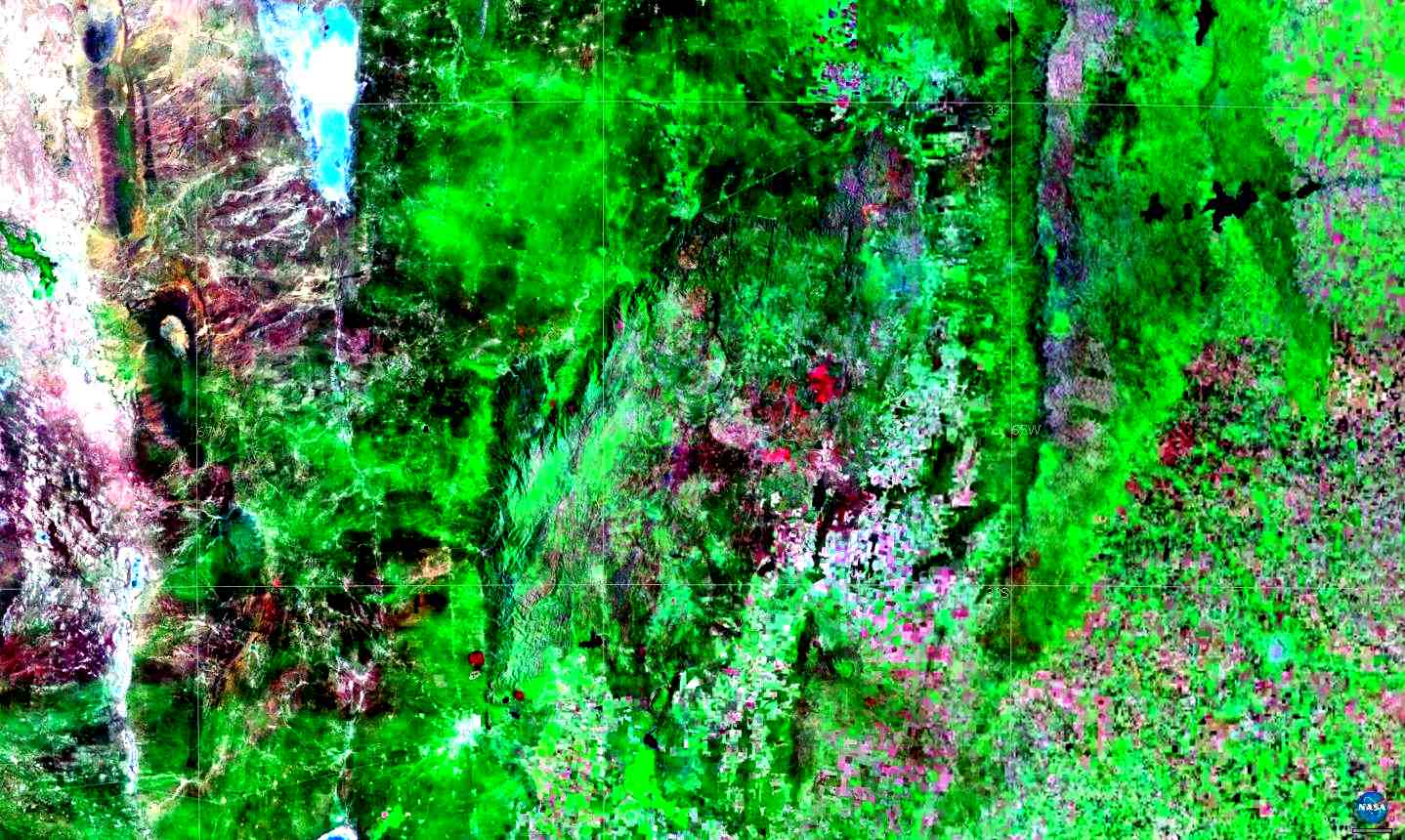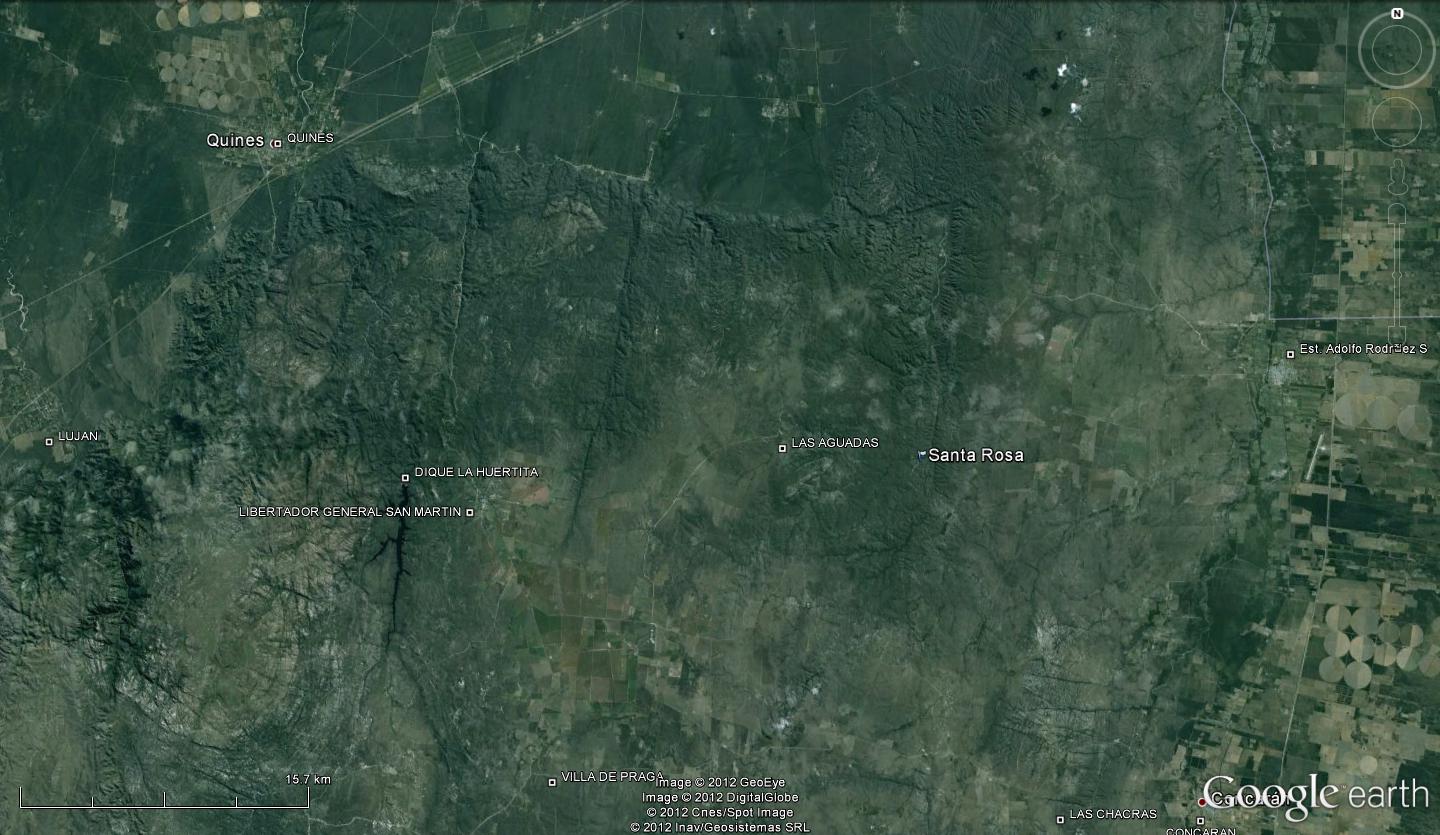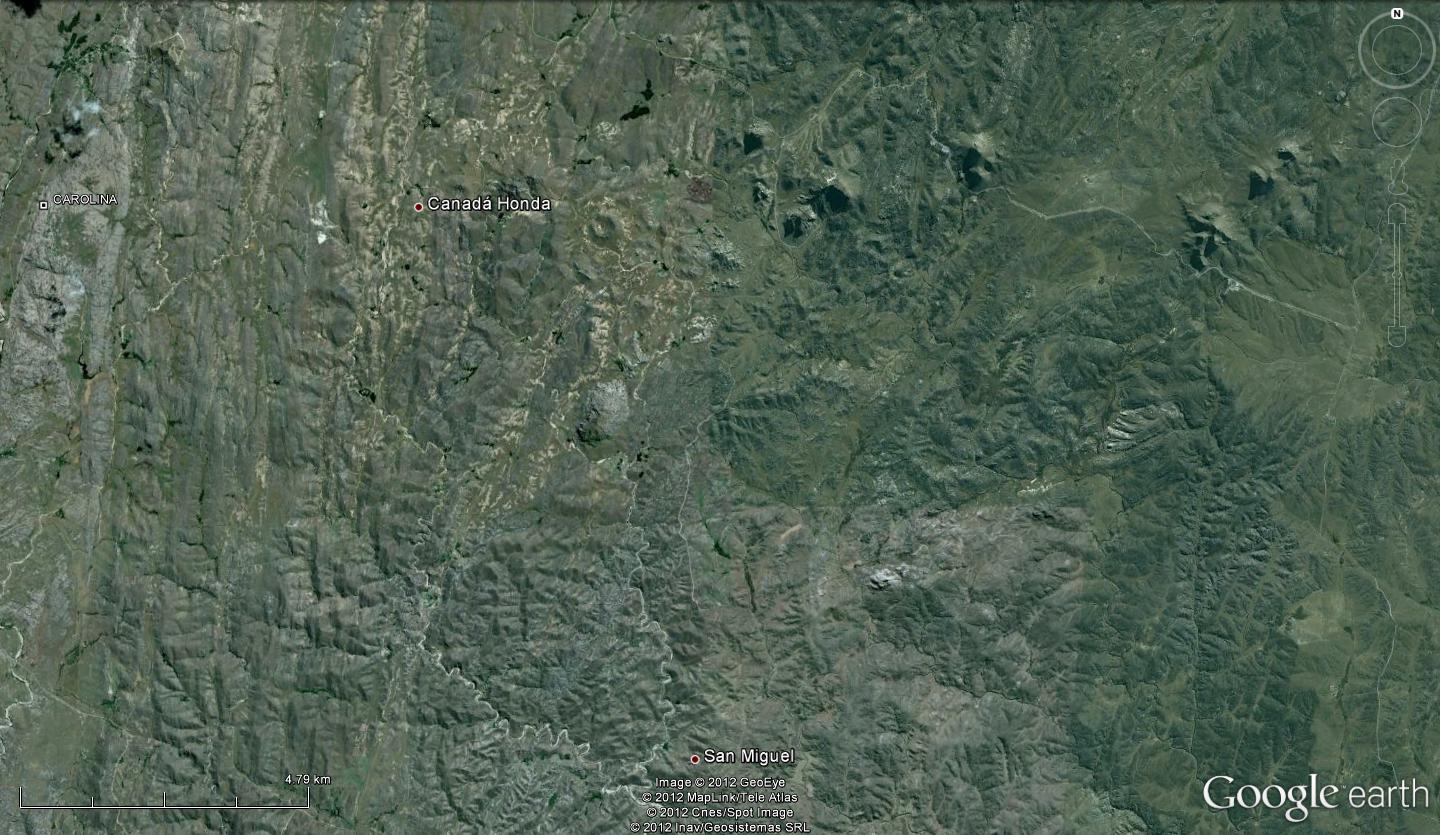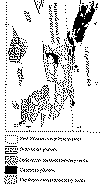

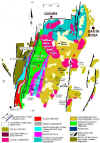
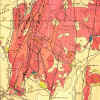
Unidades de las Sierras de San Luis
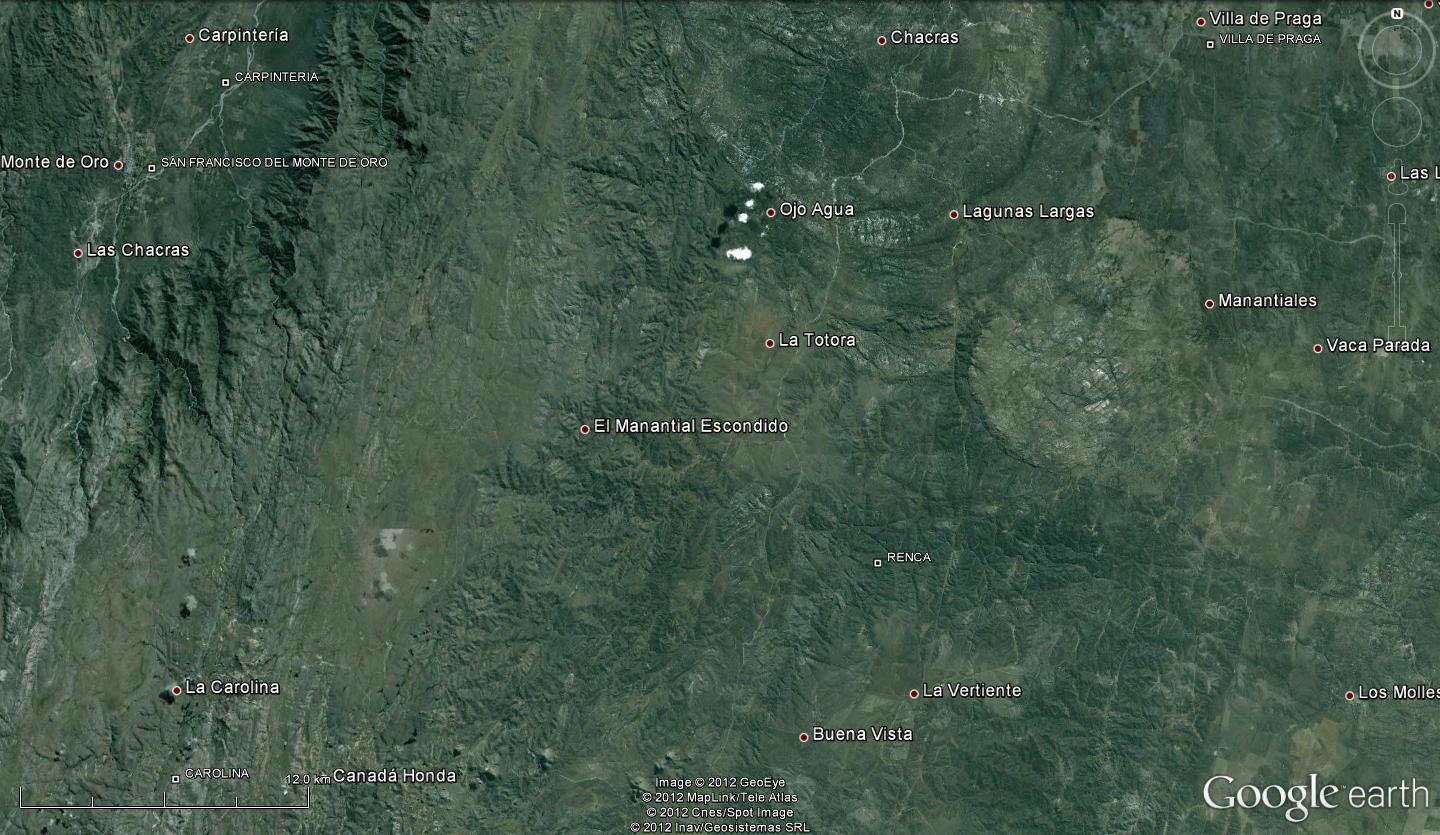

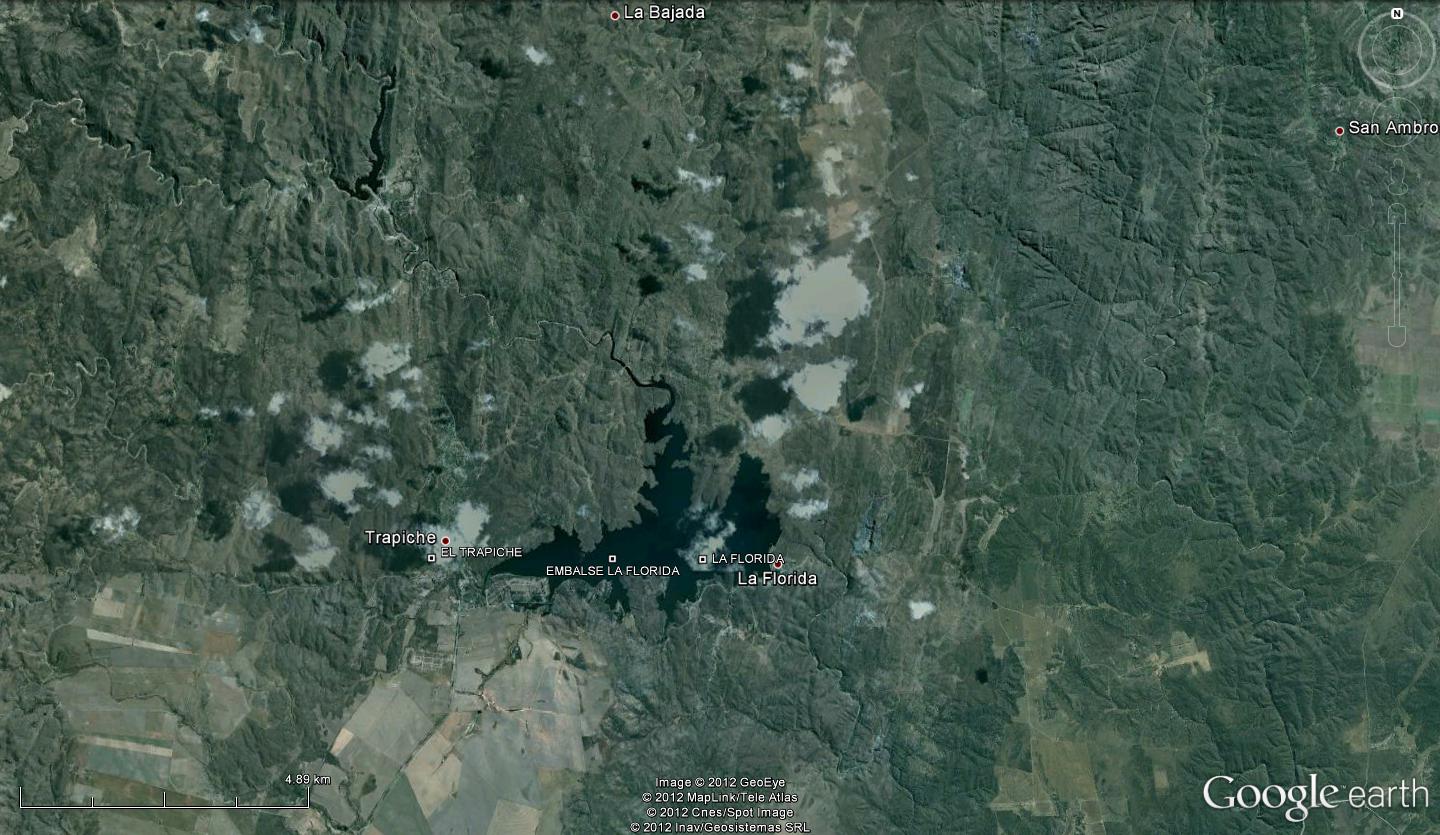
Metamorphic
complexes
Low
and high-grade metamorphic complexes are in contact mainly by tectonic
relationships, with development of N-S to NNE-SSW trending shear zones. These
zones consist of Protomylonites, mylonites, ultramylonites and phyllonites of
low to high grades, that develop through several kilometers of length and tens
of meters in width. Less frequently, the limits between the metamorphic units
are transitional, especially among those of the lowest metamorphic grades.
The
San Luis Formation -
SLF - (Prozzi and Ramos, 1988; Prozzi, 1990) or Phyllite Group (von Gosen and
Prozzi, 1996) is exposed in two belts of the central and western parts of the
Sierra de San Luis. It consists of alternating phyllites and meta-quartzites
with minor meta-conglomerates (Conglomerado Cañada Honda, Prozzi, 1990) and
acid meta-magmatic rocks, interpreted as extrusive (Brodtkorb et al.,
1984; Fernández et al., 1991) or intrusive (von Gosen and Prozzi, 1996;
von Gosen, 1998a) rocks. The succession was characterized as a turbiditic
sequence, and compared with the Upper Proterozoic to Lower Cambrian Puncoviscana
Formation of the Northwestern Argentina
(Prozzi, 1990; von Gosen and Prozzi, 1998). This regional comparison was later
supported by the U-Pb crystallization age of 529 ± 12 Ma obtained from two
meta-magmatic layers (Söllner et al., 2000). The SLF is affected by a
regional compressive D1 F deformation, resulting in a tight to isoclinal,
upright to inclined F1 F folds with NNE-SSW trending axes (Sims et al.,
1997; von Gosen and Prozzi, 1996, 1998; von Gosen 1998a, 1998b), associated with
a penetrative axial-plane S1 F slaty cleavage. The metamorphic grade related to
this deformation is low to middle greenschist facies. A second deformation
event, refolding the F1 F folds, and associated with S2 F crenulation cleavage,
is registered only at few localities (Sims et al., 1997; von Gosen and
Prozzi, 1996, 1998; von Gosen 1998a, 1998b). Low pressure - high temperature
metamorphic aureoles surround the pre-orogenic intrusive plutons and are both
deformed together.
The
Micaschist Group -
MG - (von Gosen and Prozzi, 1996) accompanies the SLF along the western and
eastern borders of the central belt of this unit (Fig. 1), and a continuous
structural and metamorphic gradation is mentioned among them (von Gosen and
Prozzi, 1998). However, in the contact zone between the SLF and the eastern
strip of the MG, a broad (up to 3 km wide) ductile shear zone was identified (Río
Guzmán shear zone, Sims et al., 1997). To the west, two additional
strips of MG are exposed: along the eastern margin of the La Escalerilla pluton
and to the east of the Nogolí Metamorphic Complex. The protolith of this
meta-clastic succession was characterized as a flysch-like sequence - comparable
to that of the SLF (and also to the Puncoviscana Formation) - and hence as a
higher metamorphic equivalent of the SLF (von Gosen, 1998a, 1998b). In the
eastern margin of La Escalerilla Pluton, the MG is composed of an alternating
succession of biotite-muscovite schists and metaquartzites, with pegmatites and
few layers of amphibolites (von Gosen and Prozzi, 1996, 1998; von Gosen, 1998a,
1998b). Local migmatites are mentioned by von Gosen (1998a). The MG is affected
by at least two deformational events (see details in von Gosen, 1998a). D1 F
deformation is related to the folding of the clastic sequence into various types
of F1 F folds (associated with a penetrative NNE-SSW trending S1 F foliation),
equivalent to those of the SLF. D2 F deformation here is more widespread than in
the SLF. S2 F axial plane cleavage developed in relation to small to large scale
F2 F open anticline – syncline structures (with local crenulation and kink
folds of m-scale). The metamorphic conditions during D1 F deformation reached
the middle greenschist facies with local amphibolite facies, and continued
through D2 F deformation (von Gosen, 1998a).
The
MG strip along the eastern margin of the Nogolí Metamorphic Complex consists of
biotite-muscovite-garnet schists and biotite-muscovite-staurolite-garnet (±
kyanite) schists, with minor meta-quartzites (González, 2000a). Fabrics are
comparable to the D1 F - D2 F deformations of the MG of the central part of the
Sierra de San Luis, and the metamorphic overprint is of the highest grade
reported for the MG within the entire Sierra, increasing from middle greenschist
facies during D1 F up to middle amphibolite facies at D2 F.
Ar-Ar
muscovite data from the Río Guzmán shear zone yielded a rising age pattern
between 351 and 362 Ma (Sims et al., 1998).
The
Nogolí Metamorphic Complex -
NMC - (Sims et al., 1997) is exposed in the westernmost part of the
Sierra de San Luis (Fig. 1), and was also referred as Western Basement Complex
(von Gosen and Prozzi, 1998). It is juxtaposed to the SLF and the MG along a
regional scale ductile shear zone (El Realito - Río de la Quebrada shear zone),
where granitoid plutons are emplaced. The NMC is composed of micaschists,
meta-quartzites, paragneisses and migmatites, with minor orthoamphibolites,
komatiites to high-Fe tholeiitic basalts, marbles, calcsilicates and banded iron
formation (Ortiz Suárez, 1999; González, 2000a; González et al.,
2002a). Two sets of structural orientations were identified (González and Llambías,
1998; von Gosen and Prozzi, 1998; González et al., 2002a): (1) Remnant
NW-SE trending structures (S0 pF to S3 pF) attributed to pre-Famatinian events.
(2) Penetrative NNE-SSW trending structures ascribed to the Famatinian events.
The pre- Famatinian deformational events are complex and their timing is not yet
well defined. These older fabrics do not appear in the SLF and MG, but are
recognized in the Pringles and Conlara Metamorphic Complexes. Within the NMC,
the multiply deformed relics of the NW-SE fabric were re-folded and
re-orientated to the NNE-SSW Famatinian trend of strike, and the high-grade
metamorphic rocks (amphibolite plus local granulite facies) were
re-metamorphosed to a new amphibolite facies. The PT conditions of Famatinian
metamorphism were assessed using several geothermometers and geobarometers (González,
unpublished data) and were determined in various rock types. The obtained data
are 518° - 612°C and 5 - 7 Kb for a sillimanite-garnet paragneiss, 636° - 760°C
and ~5 Kb for biotite amphibolites, 589° - 633°C and 6.8 - 7.2 ± 0.4 Kb for
garnet amphibolites and 652° - 688°C and 7.3 - 7.5 ± 0.4 Kb in
garnet-clinopyroxene amphibolites. The Famatinian evolution of the NMC was
accompanied with several NNE-SSW trending, E or W dipping low to high grade
shear zone development, that continued up to Devonian times.
The
deposition of the original volcanic-sedimentary sequence and its structural and
metamorphic evolution started at some pre-Famatinian times and continued through
the Famatinian events (Sims et al., 1997; González and Llambías, 1998;
von Gosen and Prozzi, 1998; González et al., 2002a). The presence of BIF
and komatiites whitin the same sequence, and the Early Mesoproterozoic Sm-Nd
isochron date of the mafic to ultramafic rocks (Sato et al., 2001b) might
be evidences supporting the existence of Precambrian protoliths in the Sierras
de San Luis.
The
Pringles Metamorphic Complex -
PMC - (Sims et al., 1997) is partly equivalent to the Eastern Basement
Complex of von Gosen and Prozzi (1998). It is exposed in the central part of the
Sierra de San Luis between two belts of the MG (Fig. 1). To the west, the PMC is
juxtaposed to the MG along a mylonite zone steeply inclined to the east, whereas
the eastern boundary is masked by granite and pegmatite intrusions (von Gosen
and Prozzi, 1998). The PMC is composed of pelitic and psammitic schists and
gneisses with sillimanite-garnet-biotite assemblage (± cordierite ± spinel),
orthogneisses and minor meta-quartzites, amphibolites and calcsilicates. All
these rocks are weakly to densely injected by granitic, pegmatitic and aplitic
veins and dykes on different scales (Sims et al., 1997; von Gosen and
Prozzi, 1998). The main structures are tight F2 F folds associated with N-S to
NNE-SSW trending and steeply inclined to subvertical S2 F foliation overprinted
to an older fabric probably comparable to the pre-Famatinian structures of NMC
(von Gosen and Prozzi, 1998).
According
to these authors, prior to and after the compresive D2 F event, the rocks were
migmatized by granitic melts, and then affected by a F3 F folding. Prograde
amphibolite facies metamorphism accompanied the D2 F - D3 F events (Sims et
al., 1997, 1998; von Gosen and Prozzi, 1998). Peak granulite metamorphic
conditions are recorded within the thermal aureole of the mafic to ultramafic
intrusions (see below, Igneous Activity), particularly in the Virorco and Las
Aguilas areas (González Bonorino, 1961; Sims et al., 1997; Hauzenberger et
al., 2001). Ductile shearing affected the metamorphic and mafic to
ultramafic rocks at retrograde amphibolite to greenschist facies conditions
(Hauzenberger et al., 2001; Brogioni and Ribot, 1994). Three metamorphic
stages were quantified by Hauzenberger et al. (2001), at 570° – 600°C
and 5 – 5.7 Kb, 740° – 790°C and 5.7 – 6.4 Kb, and 590° – 650°C and
5.4 – 6.0 Kb, respectively for regional metamorphism, local aureole
metamorphism, and metamorphism associated with shearing. The regional N-S
trending ductile shear zone, affecting the belt of the mafic to ultramafic rocks
and extending along more than 100 km, was identified as the La Arenilla mylonite
zone (Ortiz Suárez et al., 1992), and described by von Gosen and Prozzi
(1998).
Close
to the eastern border of the northern segment of this mylonite zone, P-T
conditions of 525° - 774°C and 3.7 - 7.6 Kb (garnet amphibolites) and 650° -
774°C and 5.0 - 9.5 Kb (biotite-garnet gneiss) were computed within the PMC by
Ortiz Suárez (1999), and related to peak stages of Famatinian metamorphism.
The
U-Pb SHRIMP data of 460 – 450 Ma from zircon rims and monazites from the
garnet sillimanite gneiss of the PMC were interpreted as the timing of the
regional metamorphism (Sims et al., 1998). These dates are perhaps
documenting the retrograde rather than the prograde stage of metamorphism,
because of the difficulty in dating the prograde high-grade metamorphism (Foster et al., 2000). Zircon core dates with peak distribution through
Neoproterozoic to early Cambrian were considered as representing the Pampean
processes in the source region. Another K-Ar amphibole date from an amphibolite
of the PMC is 466 ± 23 Ma (Ortiz Suárez, 1999). The rocks affected by the La
Arenilla mylonite zone yielded moscovite Ar-Ar dates of 366 ± 2 Ma in the
central part and 375 ± 1 Ma in the southern part of the Sierra (Sims et al.,
1998).
Scarce dating on the Ordovician metamorphism include monazite datings by
conventional U-Pb (458 ± 3 Ma) and chemical Th-U-Pb (470 ± 15 Ma) methods for
the same sillimanite-garnet paragneiss used for P-T calculations, Sm-Nd whole
rock and mineral isochron (445 ± 21 Ma) and Ar-Ar plateau ages (476 to 457 Ma,
amphiboles) from amphibolites (González et al., 2002a). Another K-Ar
amphibole date comes from an amphibolite of this western region, with 452 ± 23
Ma (Ortiz Suárez, 1999).
Ductile
shear zones are particularly conspicuous within this complex (Fig. 1), and their
relationships with the post-orogenic plutons suggest their long-lasting activity
accompanied with retrogression, through Ordovician to Devonian times. From the
area of Nogolí, K-Ar dates between 414 and 364 Ma were obtained from mylonite
zone biotites (Sato et al., 2001a, and unpublished data of the authors).
The
Conlara Metamorphic Complex -
CMC - (Sims et al., 1997) is exposed in the eastern part of the Sierra de
San Luis (Fig. 1), and includes the Las Aguadas Metamorphic Complex described by
Ortiz Suárez (1988) in the northeastern region. von Gosen and Prozzi (1998)
suggested a continuous structural and metamorphic gradation from the MG. The CMC
consists of pelitic and psammitic biotite-muscovite-garnet-sillimanite (±
tourmaline ± chlorite) schists and pelitic and psammitic biotite (± garnet ±
sillimanite) gneisses. These rocks show a metamorphic differentiation layering
and various generations of granitic to pegmatitic injections, allowing local
migmatite formation.
Minor
amphibolites, marbles and calcsilicates are also mentioned (Llambías and
Malvicini, 1982; Delakowitz et al., 1991, Brodtkorb and Pezzutti, 1991).
At least two deformational events were identified within the CMC (Kilmurray,
1981, 1982; Kilmurray and Dalla Salda, 1977; Ortiz Suárez, 1988; Ortiz Suárez
and Sosa, 1991; Sims et al., 1997; Llaneza and Ortiz Suárez, 2000). D1
deformation is related to the symmetric to asymmetric F1 folding with E-W to
NW-SE trending axis, associated with a non-penetrative S1 schistosity variably
dipping to the north or south (Kilmurray, 1981, 1982; Kilmurray and Dalla Salda,
1977). This orientation of D1 fabric elements is comparable to the S0 pF - S3 pF
of the NMC in the western region. The penetrative D2 F deformation refolded the
F1 folds around tight F2 F folds with N-S to NNE-SSW trending axis, whereas S1
was crenulated by NNESSW trending, steeply E or W dipping S2 F foliation
(Kilmurray, 1981, 1982; Kilmurray and Dalla Salda, 1977; Ortiz Suárez, 1988;
Llaneza and Ortiz Suárez, 2000). Open F3 F folds with NE-SW trending axis is
then restricted to localized areas near fractures (Ortiz Suárez, 1988). Peak
metamorphic overprints reached amphibolite facies conditions during the D1
deformational event, whereas D2 F was accompanied with retrogression at
greenschist facies (Kilmurray, 1981, 1982; Sims et al., 1997).
Available
K-Ar Ordovician and Siluro-Devonian dates from this complex (455-410 Ma, Llambías
and Malvicini, 1982; 430-397 Ma, López de Luchi et al., 2002) are
difficult to interpret in relation to peak metamorphism and subsequent shearing
or cooling processes.
The Phyllite and micaschist Group with associated intrusions in the Sierra de San Luis (Sierras Pampeanas/Argentina)-structural amd metamorphic relations Von Gosen (1998)
Geometric analysis and timing of structures on mafic-ultramafic bodies and high grade metamorphic rocks in the Sierras Grandes of San Luis province, Argentina. Delpino et al, 2001
STRUCTURE, METAMORPHISM AND AGE OF THE PAMPEAN-FAMATINIAN. Gonzalez et al 2002 154
Structural evolution of Sierras de San Luis. Steenken et al (2002) 373
Evidencias del ciclo Pampeano en el basamento del sector
noroccidental de la Sierra de San Luis, 2003. Graciela I. VUJOVICH y Héctor A. OSTERA. Revista de la Asociación Geológica Argentina, 58 (4): 541-548
Provenance and tectonic setting of the protoliths of the
Metamorphic Complexes of Sierra de San Luis, 2003.
Mónica G. LÓPEZ de LUCHI, María E. CERREDO, Siegfried SIEGESMUND. Revista de la Asociación Geológica Argentina, 58 (4): 525-540 (2003)
orogenos
pampeanos
